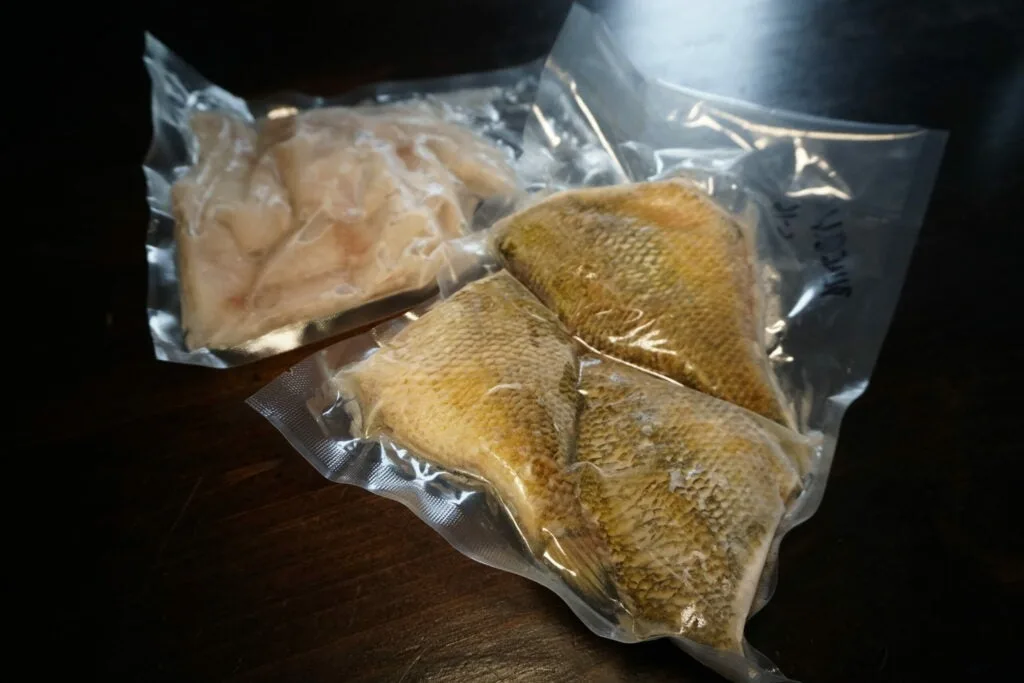
When packaging your fish for the freezer, eliminate freezer burn by storing it in vacuum-sealed bags.
For anglers in some parts of the country, it’s salmon season (or nearly so). That means it’s time to reap Mother Nature’s bounty and put up a bunch of fish. Those of us who don’t live in salmon country aren’t so lucky, but there are still plenty of opportunities to catch some fish before fall. I’ve been adding catfish to my freezer lately, and I’ve seen several limits of walleye on my social-media feed from friends who have figured out the late-summer bite.
**Read Next: 15 Best Recipes for Fish
**
Saving all that precious meat does come with some perils, as most fish—whether frozen whole or as fillets—are especially prone to going bad in the freezer. But with some care, and by following these tips on how to freeze fish, anglers are guaranteed a wonderful meal of nearly fresh fish months down the road.
Ice Your Catch Before You Freeze It
Remember the old adage, “Quality in equals quality out.” Take care of your catch from the moment it leaves the water. Don’t let it flop around on the ground or in the bottom of the boat, which can bruise its flesh. If you don’t have a livewell, get it on ice immediately.
Clean Your Fish Before You Freeze It
Once the fish is home and processed, rinse it well with cold water to eliminate any contaminants that can create off flavors in the freezer.
Portion the Fillets
When packaging your fish for the freezer, sort the fillets into meal-sized portions. This way you only thaw as much as you plan to eat in one sitting. Never refreeze previously frozen fish.
**Read Next: What You Want in a Vacuum Sealer
**
How to Avoid Freezer Burn
Freezer burn is caused by direct exposure to cold air, which dries out the flesh, making it inedible. Choose a storage method that eliminates the risk of freezer burn, such as freezing the fillets under vacuum in a sealed bag. If you use plastic wrap or zip-top bags, do your best to make sure there are no air pockets. It also helps to wrap the packages in butcher paper to prevent the plastic from tearing.
Keep Your Freezer Cold
Who remembers all those waxed milk cartons of fish in your parent’s freezer? Freezing fish in water is a great way to keep it fresh; however, the flesh can absorb water during the process, turning it mushy. Make sure your freezer is set to its coldest level to freeze fish as quickly as possible.
How to Freeze Salmon
According to the University of Alaska–Fairbanks Extension Service,
high-fat fish, such as salmon and whitefish, are also susceptible to going rancid in the freezer. Much like freezer burn, this is caused by oxidation when exposed to cold air. For salmon and whitefish, you’re best off using a vacuum-sealer and eating the
How to Thaw Fish
Thaw frozen fish quickly by running cold (never warm or hot) water over the package.





